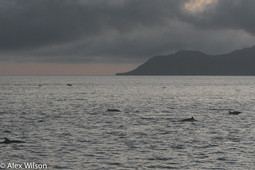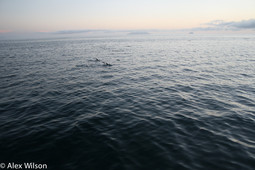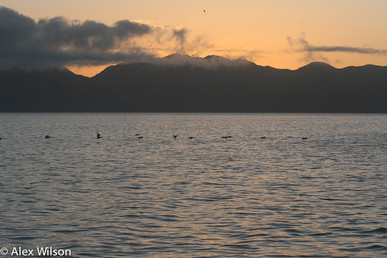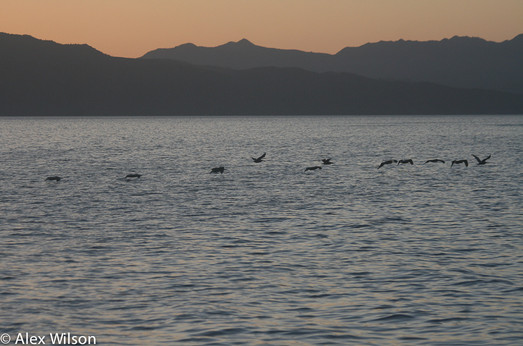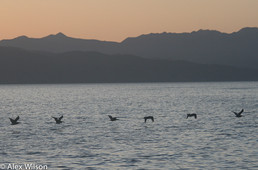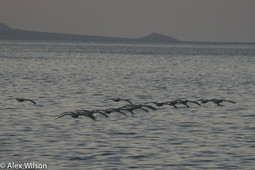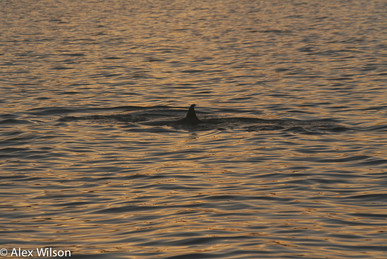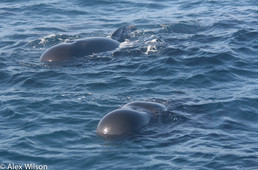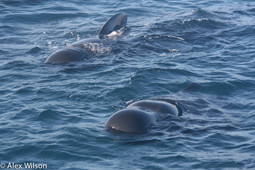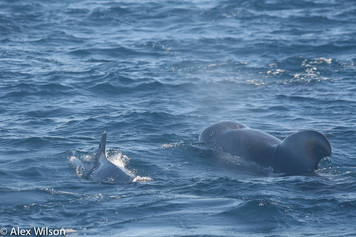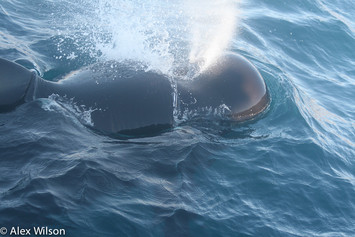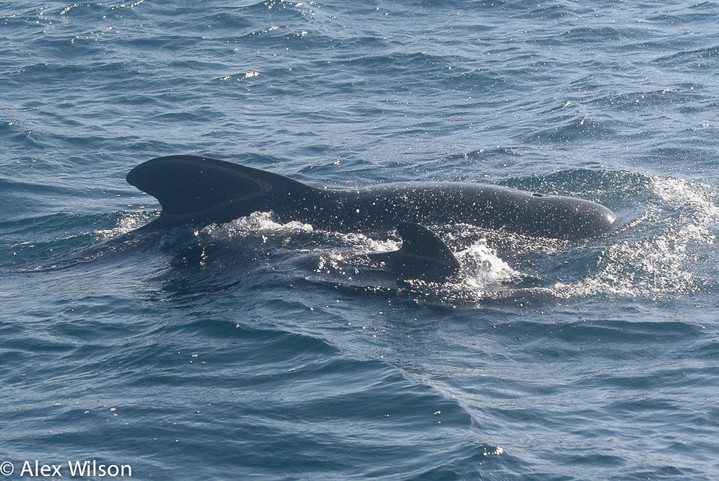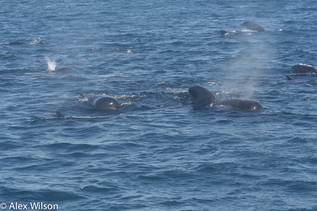Day 10 - Tuesday 6th April
San Jose Island – The Cape
We enjoyed another calm night at anchor under the volcanic cliffs north of Nopolo. We left just at daybreak and it wasn’t long before a group of Long-beaked Common Dolphins was sighted and provided us with wonderful views. Many of us, gathered on the bow, saw a Bryde’s Whale surface.
While waiting for the whale to come up from a deeper dive we saw a distinctive blow of a Sperm Whale. The Spirit headed towards the cetacean’s blow and we were able to get a view of the rocking whale before it raised its massive tail and fluke to
sink down.
We saw the Sperm Whale again, but the real stars of the morning were a group of Pilot Whales that we observed for over an hour. A juvenile and a neonate, just a few days old, were remarkable to see.
There were more adventures to come so we left the Pilot Whales and a distant Humpback. A few Bottlenose Dolphins swam by, but did not play much on our wake. The avian world was not ignored as three Red-billed Tropicbirds were seen sitting on the surface in just a small stretch.
Our next destination was Los Islotes. The volcanic crags make it the perfect roosting site for Brown and Blue-footed Boobies. However, this year there were far fewer birds present than in most years caused by warm water being an El Nino year.
Several pelicans seemed to be posing for us as we motored around the rocks. Even more photogenic were the snorting and cavorting California Sea Lions that we approached closely. Some barked back at us, displaying prominent canine teeth. Others lay on the nearby rocks, barely moving a muscle. Sally Lighfoot Crabs and a few waders including Black Turnstone and Wandering Tattler scampered over the barnacle encrusted rocks.
Many of us soon had exceptionally close views of the sea lions after donning swim and snorkelling gear. Los Islotes is famous for its friendly pinnipeds and it wasn’t long before one of the sea lions swam to most of us in the water.
After our visit to Los Islotes we headed south along the western side of this dramatic island. The many hued browns, tans and reds were a clue to its turbulent volcanic history
Near the southern tip of the island we found a small group of Smooth-tailed Mobula. These rays were smaller than the ones we had been seeing in other parts of the gulf. The way they jumped out of the water and then dropped straight down was
quite comical.
As the boat motored southward, we enjoyed one last sunset behind Baja’s Cape region. We toasted the day’s great adventures and the remarkable journey that would soon come to an end.
